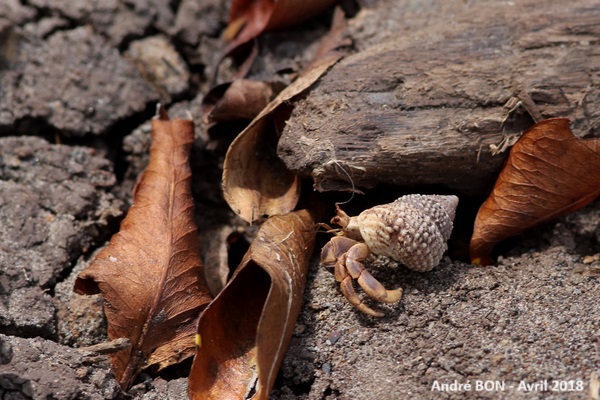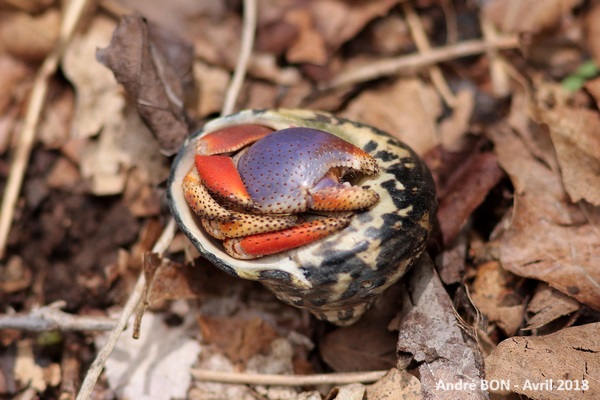


| Caribbean Hermit Crab (Coenobita clypeatus (Fabricius, 1787)) |



|
|
Scientific name: Coenobita clypeatus (Fabricius, 1787) Common name: Caribbean Hermit Crab Other names: Soldier Crab, West Atlantic Crab, Tree Crab, Purple Pincher. French name: Bernard l'Hermite terrestre, Pinceur violet. Order: Decapoda Family: Coenobitidae Size: 6 to 12 cm. Habitat : Beaches, mangroves, coastal forests, but also up to several kilometres from the coast. Food: Omnivores and detritivores Reproduction : Mating takes place on dry land. The eggs are incubated on the abdomen of the female, which releases them into the water after about one month. The larvae emerge from the water after about twenty days of development. They take refuge inside a gastropod shell. Geographic area: West Indies, Gulf of Mexico, South Florida, Venezuela. |
The Caribbean Hermit Crab lives in a gastropod shell that it must replace during its growing moults. It is generally orange-brown in colour. Juveniles are paler. It has ten pairs of legs including two claws or chelipeds. The left claw is larger, domed, and usually purple in colour with an orange tip. This claw obstructs the opening of the shell when the Hermit Crab wants to protect itself. It also has two pairs of antennae. The lateral antennae are longer than the medial antennae. The elongated and rounded eyes are located at the tip of peduncles. The Caribbean Hermit Crab is mainly nocturnal and hides during the day. |
| [To know more about the Caribbean Hermit Crab] [Next picture] [Top] |

|
I must have unintentionally disturbed this Hermit Crab observed in broad daylight. |
| [To know more about the Caribbean Hermit Crab] [Next picture] [Previous picture] [Top] |

|
The pale colour must indicate a juvenile. This is easy to confirm due to the small size of the shell. |
| [To know more about the Caribbean Hermit Crab] [Previous picture] [Top] |

|
The “Purple Pincher” asks that we leave it quiet in its shell (which I did). |